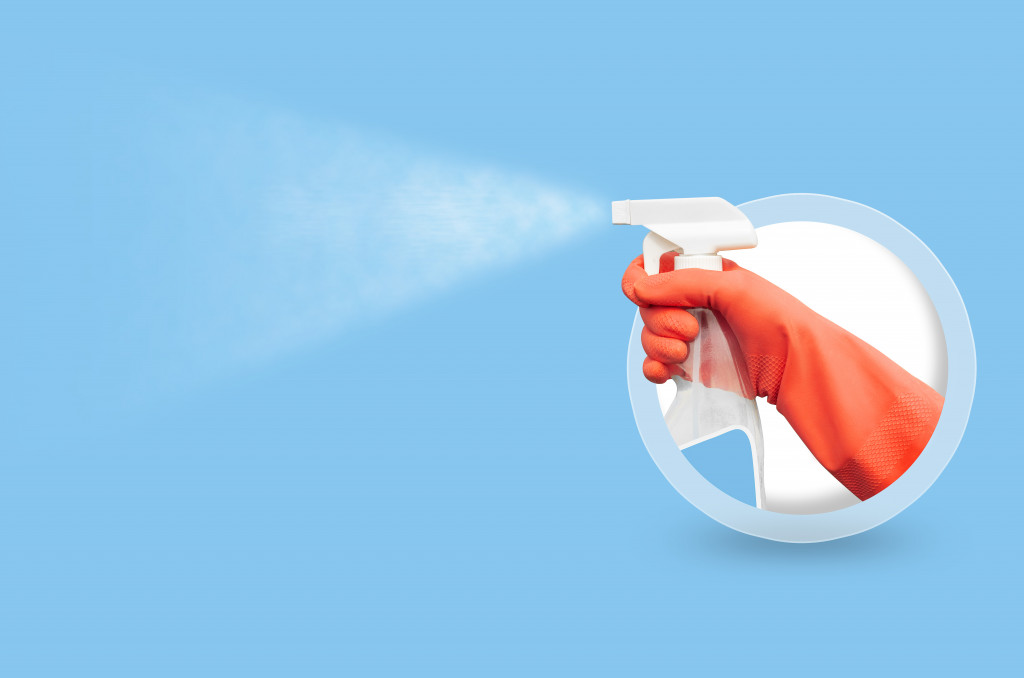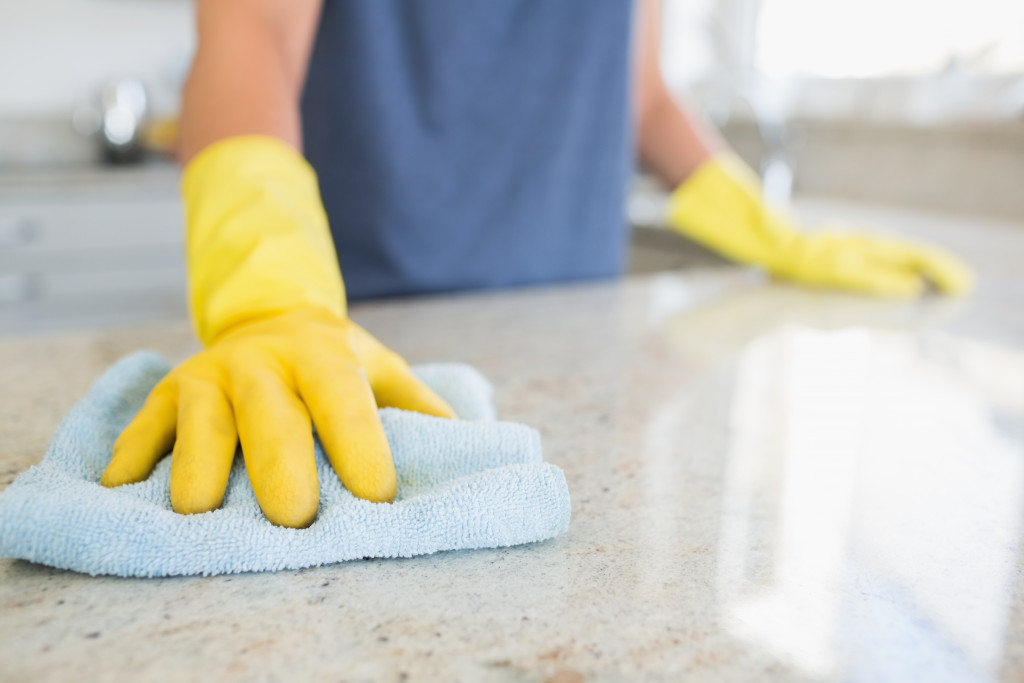It has been a year since COVID-19 drastically changed the way we do things — even how we clean our homes. Frequent disinfection and cleaning are essential for keeping yourself and your family safe from infectious diseases.
The pandemic has made almost everyone more conscious of cleanliness and personal hygiene. For instance, many people staying at home are having their necessities delivered to their doorsteps. At some point, may have wondered— “Could these deliveries have COVID-19 on it?”
Others are always looking for ways to improve their home’s anti-COVID-19 plan: invest in heavy-duty antibacterial floors, have a regular cleaning schedule and shop for hardcore cleaning products.
Either way, the goal is the same: to keep COVID out of your home. But is there one way to clean and disinfect your home or are there other ways to keep your household virus-free?
Can You Spread COVID-19 Through Surfaces?
Studies have shown that the novel coronavirus can stay on surfaces for hours or days, depending on the type of surface. But does that immediately translate into people catching COVID-19? According to experts, there is little evidence proving that people can get COVID-19 from surfaces.
So, while you don’t have to always wipe down everything you bring into your home or the things you touch, it’s always a good idea to clean high-traffic surfaces regularly. If no one with COVID-19 has been in your home, wash your surfaces with soap and water once a day to remove viruses on the surface.
If someone in your home is sick, additional disinfecting and cleaning may be needed, especially for high-touch surfaces like handles, countertops, doorknobs and light switches.
The additional cleaning and disinfecting are necessary if:
- If a member of your home is at high risk for COVID-19
- There’s a high rate of cases in your community
- Members of your household practice poor hygiene
- You are surrounded by people who don’t wear masks
What is the Difference Between Disinfecting and Cleaning?
Cleaning a surface — simply removing dirt and dust — is not the same as disinfecting it to kill bacteria and viruses.
The market has many products for cleaning hard surfaces; some of them you can find at home (e.g. vinegar and soapy water). While cleaning the high-traffic surfaces to remove dust and debris is an important step, you should still disinfect all surfaces of your home from COVID-19.

How Can You Properly Disinfect Your Home?
Start by disinfecting common surfaces. Use commercial disinfectant, bleach or vinegar to get rid of viruses on high-touch surfaces. Your local grocery is flooded with many cleaner-disinfectants that clean surfaces while killing germs.
Also, disinfect the right way. Remove any visible grime or dust from the surface to ensure powerful disinfection. Keep in mind that different sanitizers also require a certain period to work on surfaces. Some disinfectants require up to 10 minutes before they kill viruses and germs, which means the surface must be kept wet with the disinfectant.
Follow a disinfection routine, too. A daily and weekly routine for common areas like the bathroom and kitchen can help you combat deadly viruses.
Consider the following daily disinfecting practices:
In the Bathroom
- Spray the toilet and flush the handle with disinfectant
- Clean and disinfect handles and taps
- Wash the towel to prevent microbial growth
- Empty the bin every day
In the Kitchen
- Replace the kitchen towel and dishcloth every day
- Empty the garbage bins every day and spray them with disinfectant
- Disinfect the cabinet pulls, countertop, chopping boards, switches and kitchen appliances daily
- Immediately clean accidental spills to prevent more pathogens
Could Deliveries Bring COVID-19 To Your Home?
In the current climate, online shopping is safer than in-person shopping because it eliminates personal contact, which is the primary culprit behind COVID-19. While studies mention that the coronavirus can live for up to 24 hours on boxes, the Centers for Disease Control and Prevention (CDC) believes it’s unlikely that the virus will spread from groceries or packaging delivered via the mail.
So you can feel safe when touching your packages (no need to Google “How to Cancel eBay order!”). But if you are still concerned, open up your groceries or boxes, wash your hands and dispose of the box before you wash your hands again.
How about the food packaging? The CDC has the same stand, insisting that the virus will not be spread via food or its packaging. But just to be safe, refrain from sharing eating utensils or food with someone outside of your home.
COVID-19 may have changed the way we live, but we can fight back by changing the way we clean and sanitize to get rid of the virus! Regularly disinfect and clean your home, so we can see the end of COVID soon!

